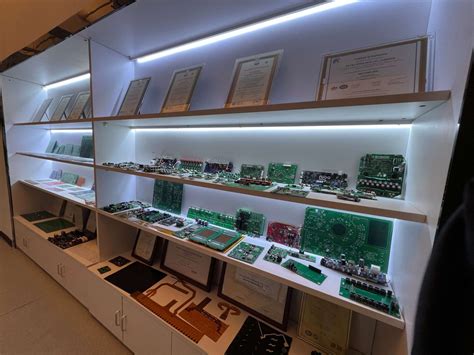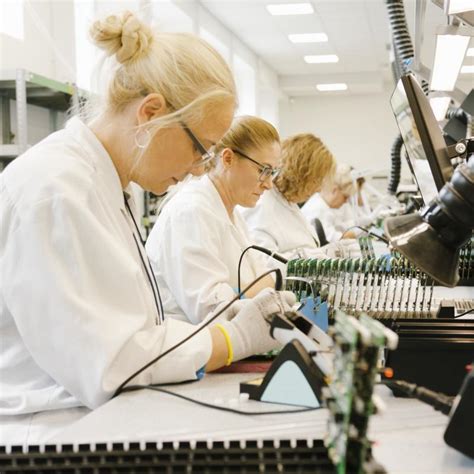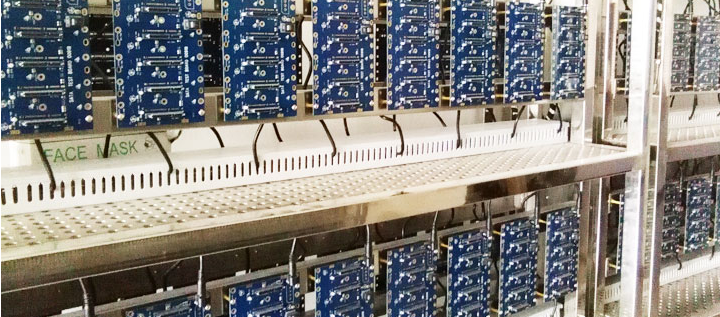Discover the Secrets to the Best PCB Assembly Services
Key Takeaways
When venturing into the realm of pcb assembly, it is essential to grasp the pivotal aspects that contribute to selecting the premier PCB assembly services available. One of the foremost considerations should be the provider’s commitment to quality control; a robust quality assurance system ensures that every component is meticulously inspected, thereby minimizing errors and enhancing reliability. Additionally, staying abreast of advanced technologies utilized in pcba processes can offer a competitive advantage. These technologies not only streamline operations but also enhance precision, which is crucial for sensitive electronic applications. Another vital point is the need for clear communication channels with potential assembly providers; this fosters collaboration and promptly addresses concerns. Finally, while striving for excellence, companies must find a balance between cost and quality, as selecting an overly inexpensive option can lead to compromises that impact overall performance. Being mindful of these elements will undoubtedly aid in identifying services that align with project requirements and elevate overall project outcomes in the ever-evolving field of electronic manufacturing.
Understanding PCB Assembly: A Comprehensive Overview
PCB assembly, commonly referred to as PCBA, is a critical phase in the electronics manufacturing process. It involves the intricate task of placing electronic components onto printed circuit boards (PCBs) and soldering them into place to create functional electronic devices. Understanding the fundamentals of PCB assembly is paramount for anyone involved in electronics design and manufacturing.
Key factors that influence the quality and efficiency of PCBA include selection of components, precise assembly techniques, and the application of state-of-the-art tools. A typical PCB assembly process begins with the design of the circuit board, followed by component sourcing, surface mount technology (SMT), through-hole soldering, and testing. Each stage demands meticulous attention to detail to ensure that the end product meets industry standards.
To illustrate this process, consider an example where two companies—Company A and Company B—adopt different approaches to PCB assembly:
| Company | Component Sourcing | Assembly Technique | Testing Methodology |
|---|---|---|---|
| Company A | Local suppliers | Fully automated | In-circuit testing |
| Company B | Global suppliers | Manual assembly | Functional testing |
In this table, the contrast between Company A’s automated processes versus Company B’s manual methods highlights how vendor choices and techniques can significantly impact quality outcomes.
Adopting advanced technologies such as robotic assembly systems or automated optical inspection can enhance accuracy in PCBA, while stringent quality control measures play an essential role in minimizing errors during production.
“Investing in advanced technologies not only improves efficiency but also boosts overall product reliability,” emphasizes industry expert Jane Doe.
In conclusion, a comprehensive grasp of the nuances involved in PCB assembly allows engineers and project managers to make informed decisions that impact their projects’ success significantly. As demand for high-performance electronics increases, staying updated on best practices within PCB assembly will only grow more crucial.
Key Factors to Consider When Choosing PCB Assembly Services
When selecting PCB assembly services, several pivotal factors should be weighing heavily on your decision-making process. One of the first considerations is the provider’s experience in the industry; a well-established company often demonstrates superior expertise and a track record of quality. Another critical aspect is quality control measures. Look for companies that implement robust quality control procedures throughout their pcba process, as this significantly affects the reliability and performance of the final product. Additionally, assess the level of technology utilized by potential suppliers; advanced automation and cutting-edge equipment can enhance accuracy and efficiency in assembly tasks.
Equally important is the provider’s capability to handle your specific project requirements, including design complexity and volume demands. Communication is another key element; effective collaboration between you and the assembly service can lead to successful outcomes. Furthermore, consider their customer support services, as responsive support can facilitate a smoother process during times of uncertainty.
Finally, evaluate the overall cost versus quality aspect; while it might be tempting to opt for the lowest price, remember that this may compromise quality in your final pcba products. By weighing these factors carefully, you can select an assembly service that aligns best with your project goals and ensures a high standard of output in your electronic components.
Importance of Quality Control in PCB Assembly
In the realm of PCB assembly, thorough quality control is paramount. It serves as the backbone of achieving a reliable and effective printed circuit board assembly (PCBA). Quality control ensures that every component is meticulously inspected and tested at various stages of the assembly process, thereby reducing the risk of defects and malfunctions. By implementing stringent quality measures, companies can identify flaws early on, ensuring that only the finest products reach the market. The utilization of advanced inspection technologies such as Automated Optical Inspection (AOI) and X-ray inspection further enhances quality assurance efforts. Adopting these processes not only increases customer satisfaction but also fosters long-term relationships with clients by establishing trust in the reliability and performance of their PCBA. Ultimately, a well-executed quality control strategy in PCB assembly safeguards investments, contributes to operational efficiency, and elevates overall brand reputation in a competitive landscape.
Advanced Technologies Transforming PCB Assembly Processes
The landscape of PCB assembly and PCBA is evolving rapidly, driven by advancements in technology that enhance efficiency, precision, and overall product quality. One notable transformation is the integration of automation in the pcb assembly process. Automated machines and robotic systems are streamlining operations, significantly reducing human error and increasing throughput. This shift towards automation not only accelerates production timelines but also enables more complex designs to be realized with high accuracy. Additionally, the adoption of machine vision systems allows for real-time quality control, where cameras and sensors can meticulously inspect every component placement and solder joint to ensure they meet stringent standards. Furthermore, innovations in materials science are leading to the development of improved substrates that offer better performance characteristics for electronic devices. With these advances in PCB assembly, companies can achieve more reliable products while optimizing their manufacturing processes. As these technologies continue to develop, they will undoubtedly play a crucial role in defining the future landscape of the industry, shaping how PCBA services meet the demands of increasingly sophisticated electronics.
Tips for Evaluating Potential PCB Assembly Providers
When assessing potential PCB assembly providers, it is critical to adopt a systematic approach that prioritizes quality, reliability, and technological capability. Start by reviewing the provider’s experience in the industry; a company with a robust portfolio and years of expertise is often better equipped to handle diverse projects and complexities. Look for certifications that guarantee adherence to quality standards, such as ISO 9001 or IPC certifications, which are indicative of a commitment to excellence in PCBA processes. Additionally, inquire about their quality control procedures; understanding how they identify and rectify defects during production can give insight into the final product’s reliability. Also, consider the technology they employ; advanced PCB assembly techniques can streamline production and improve accuracy. Lastly, don’t overlook customer reviews and testimonials as they provide real-world evaluations of service and satisfaction levels. By focusing on these aspects, you will be better positioned to select a PCB assembly partner that aligns with your project requirements and ensures successful outcomes.
Cost vs. Quality: Finding the Right Balance in PCB Assembly
When it comes to PCB assembly (or PCBA), navigating the intricate relationship between cost and quality is paramount for ensuring project success. Many businesses face the dilemma of wanting high-quality assemblies while managing budget constraints. The first step in achieving an optimal balance is to recognize that lower costs typically come with trade-offs that could affect the performance and reliability of the final product. Quality control measures play a critical role here, as they establish standards that ensure each component meets rigorous benchmarks. Investing a bit more upfront for top-tier PCB assembly services can save companies from potential failures and recalls in the future, ultimately leading to cost savings over time.
Furthermore, advanced technologies in PCB assembly processes, such as automated inspections and precision soldering, can significantly enhance quality while managing costs effectively. This creates a landscape where companies can select providers who are capable of combining state-of-the-art techniques with competitive pricing, allowing for greater innovation and efficiency. Therefore, it is crucial for decision-makers to not only focus on immediate costs but also factor in long-term implications of quality—making sure they choose a service provider that prioritizes both aspects in their offerings. Balancing these elements will empower businesses to make informed choices that positively impact their overall operational success and product reliability.
Real-World Case Studies: Successful PCB Assembly Partnerships
In exploring real-world case studies that highlight pcb assembly success, several partnerships stand out, showcasing how companies have effectively leveraged pcba providers to enhance their product development processes. For instance, a leading telecommunications firm faced challenges with their existing assembly provider that resulted in inconsistent quality and delivery delays. By reevaluating their options and partnering with a specialized pcb assembly service that utilized advanced technologies such as automated optical inspection and state-of-the-art soldering techniques, they witnessed a notable improvement in product reliability and speed to market. Another example involves a consumer electronics company that needed to rapidly prototype a new device. They collaborated with a pcba provider known for agile manufacturing processes, allowing them to iterate designs efficiently while maintaining stringent quality control measures. These examples underline the importance of strategic partnerships in the pcb assembly landscape; selecting the right provider can make the difference between success and setbacks, emphasizing the need for thorough evaluation during the selection process. Ultimately, these successful collaborations demonstrate not only the potential to optimize production but also the vital role of high-quality pcba services in driving innovation across various industries.
Future Trends in PCB Assembly Services and Technologies
The landscape of PCB assembly services is rapidly evolving, driven by technological advancements and changing market demands. As industries push toward increased efficiency and reduced time-to-market, innovations within PCBA processes are emerging. One significant trend is the integration of automation in assembly lines, which enhances precision while decreasing labor costs. Additionally, the incorporation of artificial intelligence (AI) in quality control systems ensures that defects are identified and rectified promptly. Enhanced digital manufacturing techniques, such as additive manufacturing, are also enabling more complex designs while maintaining integrity in PCB assembly. Furthermore, the proliferation of the Internet of Things (IoT) is prompting manufacturers to focus on smart connectivity options within their designs. This trend enhances interoperability and fosters the development of intelligent devices. As sustainability becomes a crucial consideration, eco-friendly materials and processes are being prioritized, pushing PCB manufacturers to adopt practices that minimize environmental impact. Overall, these advancements not only allow for better quality in PCBA services but also align with broader industry goals aimed at innovation and sustainability.
Conclusion
In summary, understanding the landscape of PCB assembly services is crucial for anyone looking to enhance their electronic projects. The importance of choosing a suitable PCBA provider cannot be overstated, as it directly influences the quality and performance of your final product. Key factors such as quality control, which ensures that every component functions as intended, play a pivotal role in this selection process. As technology continues to evolve, advancements in materials and techniques have redefined the capabilities of PCB assembly, making it essential to stay informed about these trends. By carefully evaluating potential providers based on their track record, use of advanced technologies, and customer feedback, you can make informed decisions that lead to successful partnerships in your manufacturing ventures. Remember, achieving a balance between cost and quality is fundamental; the most affordable option is not always the best when it comes to ensuring reliability and excellence in your assemblies. Ultimately, thorough research and strategic decision-making will empower you to choose a top-notch PCB assembly service that aligns with your project’s specific needs and goals.
FAQs
What is PCB assembly and why is it important?
PCB assembly refers to the process of soldering electronic components onto a printed circuit board (PCB). This process is crucial for creating electronic devices, as it affects the functionality and reliability of the final product.
What factors should I consider when choosing a PCB assembly service?
When selecting a PCB assembly (PCBA) service, consider factors such as quality control, the provider’s experience, available technologies, and customer reviews to ensure you receive top-notch service.
How does quality control impact PCB assembly?
Quality control is essential in PCB assembly, as it ensures that each board meets specified standards. Effective quality control measures reduce errors, improve reliability, and enhance overall product performance.
What advanced technologies are used in PCB assembly?
Advanced technologies such as automated optical inspection (AOI), selective soldering, and surface mount technology (SMT) are revolutionizing the PCBA sector by increasing efficiency and precision in the manufacturing process.
How can I assess potential PCB assembly providers?
To evaluate potential providers, review their certifications, request samples of their previous work, and assess their customer service quality. This helps ensure that they can meet your specific project needs.







